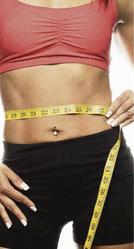
Eulalee Thompson
'Our body is a function of thinking if you get up every day and think old, you will be old. I believe we can train our muscles.' -Wilmot
There were no 'swivelled-up, miserable old hags' at this meeting to feed the stereotype of women fortunate enough to enter the second half of their lives. Such is the changing face of life into menopause and beyond.
The meeting was the first public lecture of the Jamaica Association for the Advancement of Midlife Health (formerly the Jamaica Menopause Society) held recently at The Courtleigh Auditorium in New Kingston. This re-launched association has a new look, a younger president, Dr. Monique Rainford and is now more gender sensitive (and so many men, aged 50 and beyond, were also present at the meeting).
But since the dominant superstructure (designed by men in the first place) is kinder to older men, I was more intrigued by the older women. These were my kind of 'gals' because you know I've always thought (to the amusement of others) that if I'm blessed with long life, I would be an old lady who lives on the edge - fighting the bulge, looking great in my bikini and taking up an extreme sport, like mountain biking.
Sally Wilmot, for example, still had all her muscles in the right places and was managing to keep midlife fat in check. She didn't tell us her age, but we could guess that it's in the 50 and beyond region because she said that she has been married for more than 40 years. She showed off her well-toned body in a little tank top and tight mid-calf pants, stiletto heels and with hair and make-up well done.
Train our muscles

"Our body is a function of thinking if you get up every day and think old, you will be old. I believe we can train our muscles," Ms. Wilmot told the large audience which seemed interested to know her age and her health secrets.
Hardly looking a day over 40, Ms. Wilmot has every right to talk. Her routine includes eating properly and a planned exercise programme that includes lifting weights which some 25-year-olds can hardly manage. She goes to the gym every other day (three times per week).
"I lift weights, I pay attention to ab muscles because if you have strong abs there's less strain on backs and knees. When I started paying attention to my abs, my lower back pain went away," she said.
Ms. Wilmot's exercise routine also include aerobic training, walking (she is a member of a walking group), swimming sometimes and avid gardening.
"Maintain a good posture, walk tall or you'll sag and it will help to pull abs in; practice becomes perfect. Deep breathing and stretching are very good. We can all challenge ourselves; start with little weights, start with 15- minute walks. You don't have to age, you can grow old gracefully," she advised.
A state of mind
The function's guest lecturer, Dr. Wendel Abel, consultant psychiatrist and head of psychiatry, University of the West Indies, backed up Sally's focus on re-training the mind in order to battle the stereotypes of growing old.
"Ageing has to do with the state of mind," he said. "Sometimes we think that we are old, it's in the mind and so we have to work on the power of thinking."
To arrest the 'mind games of ageing', Dr. Abel told the audience to pay attention to the vicious cycle created by 'thinking' which then impacts 'feelings' and 'behaviour'.
"Life is 10 per cent what happens to you and 90 per cent how you respond (that is, thinking and behaviour). So, we have to change our response to life," he said while pointing out that the three most powerful tools at our disposal are what we think, feel and do.
The first step to effect change is 'thought awareness' (review your perception of ageing and self); next step, identify negative thinking, then replace the negative thinking with more positive thoughts through the process of 'reframing'.
"Replace negative thoughts and people, replace all the things that tell you that your next big event is your funeral," said Dr. Abel to a rousing applause by the audience.
eulalee.thompson@gleanerjm.com

